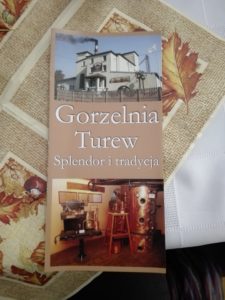We were pleased to be in Poland this week, presenting at the National Museum of Agriculture and Food Industry in Szreniawa. The conference was on “Problems connected with keeping and conservation of collections in museums”.
It was wonderful to connect with conservation professionals from all over Poland. In fact, I was the only foreigner there, so everyone was particularly welcoming. There were other presenters from Germany, Hungary and India, but they couldn’t make it to the event and presented via Skype.
The main issues which emerged from the presentations were storage (of course!), collaborations with collectors and other enthusiastic amateurs, and tensions between conservation and restoration.
Museum storage
Museum storage is the biggest problem facing all museums and there are no easy answers. As we all know, storage isn’t sexy; it doesn’t get the funding dollars. And yet, with up to 95% of all items in storage, it’s an issue that conservators, curators, registrars and administrators need to deal with.
Two conservators from the State Museum Auschwitz-Birkenau, Anna Zięba, Joanna Słońska, have been cleaning and cataloguing a collection of 16,000 items which were unearthed at Auschwitz during filming of a documentary in the 1960s. After classification, the items are individually wrapped and then stored in partitioned boxes. The whole enterprise raises important questions; which of these items are actually historic? Is each and every item a witness to genocide? Or can we carefully dispose of some of them? These items are now going to sit in storage and never be looked at again; how is that different to leaving them in the ground?
At the other end of the spectrum, Janusz Czop from the National Museum in Krakow proposed the development of a mega warehouse, a facility designed specifically for the storage of objects in perfect environmental conditions. He showed examples of best practice from Denmark and Austria. There was some lively discussion about access, but Czop sees these warehouses as deep storage. Yes, there should be a separate building nearby for research purposes, but as so few objects see the light of day it makes sense to keep them separate and secure.
Collaborations with collectors
The second day of the conference was dedicated to meeting up with enthusiastic amateurs and collectors. This was a fascinating insight and a very valuable experience.
I’ll talk about each of these in separate posts, but we toured the Wolzstyn steam train depot, met with members of the Tractor and Machine Club of Wilkowice, and visited the Turew Distillery Museum. What these all have in common is that they are run by passionate people without any sort of professional qualification in conservation. They simply love trains, tractors and vodka and have set up important facilities and events to share their passion.
The conference organisers were inviting us to ask – what role do enthusiastic amateurs have in cultural conservation? How can we engage with them, assist them, and also learn from them?
Conservation versus restoration
Another strong theme that emerged from the conference was the conflict or tension between conservation and restoration, which is a natural corollary from the previous section.
Lovers of historical agricultural machinery, for example, aren’t interested in simply conserving and displaying these objects. They want them to live, to breathe, to run, to work. This may mean using modern materials or finding modern equivalents for missing parts, an idea which can be anathema to some conservators.
When restoring a windmill, for example, a small motor was introduced. Visitors want to see the windmill in action, even when the wind conditions aren’t right.
Very few conservators would approve of a 16th century plate being repaired and then used in a dinner service. Perhaps this isn’t a good equivalence, but you get the idea!
As I head home from Poznan, I am overwhelmed by the amazing hospitality that I received during my stay. The conference will be held again in two years time, and I’m already thinking about my next presentation.

